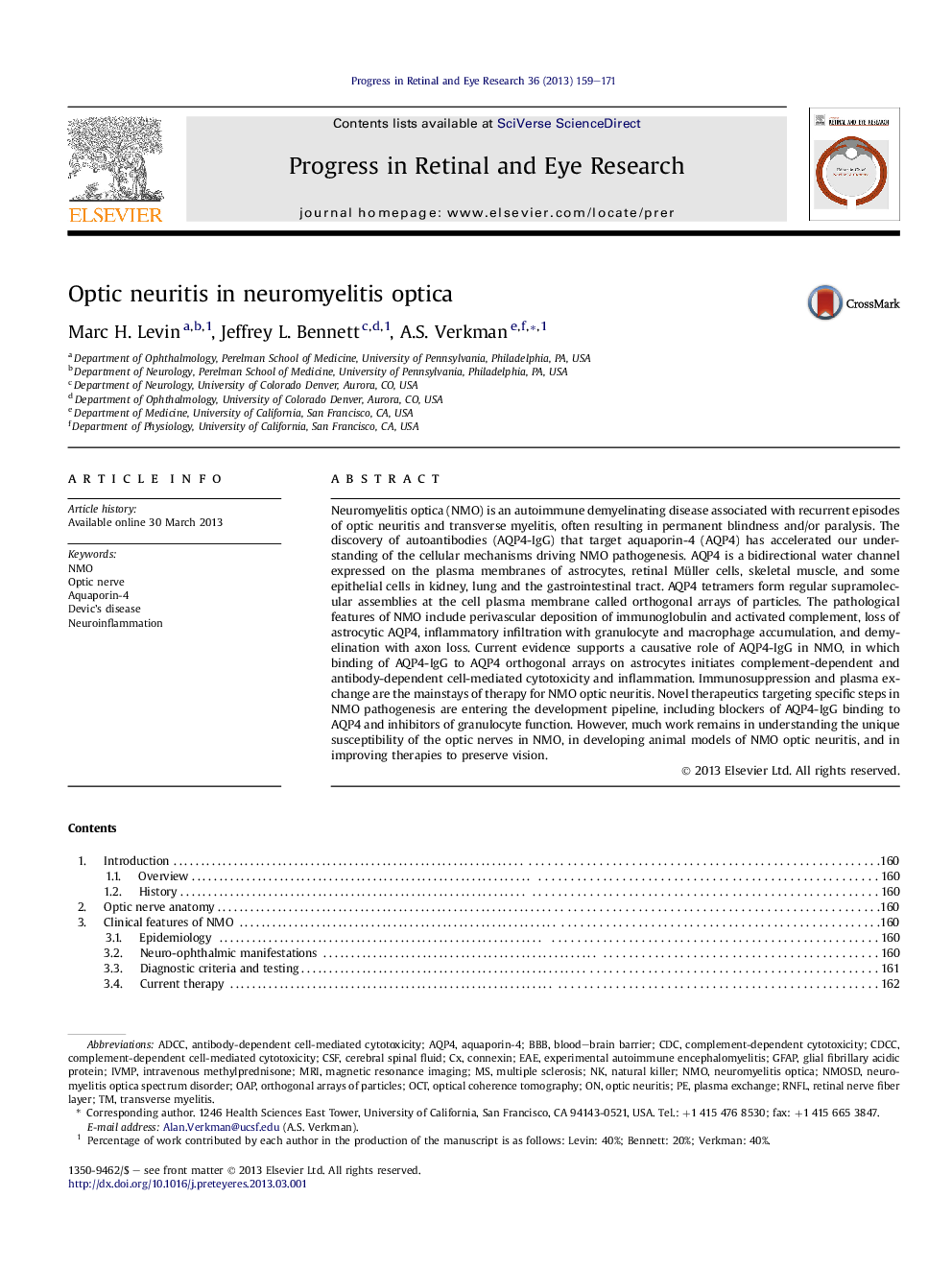| Article ID | Journal | Published Year | Pages | File Type |
|---|---|---|---|---|
| 6202763 | Progress in Retinal and Eye Research | 2013 | 13 Pages |
â¢Optic neuritis is a major clinical manifestation of Neuromyelitis Optica (NMO).â¢Most NMO patients are seropositive for anti-aquaporin-4 antibodies (AQP4-IgG).â¢AQP4-IgG binding causes complement- and cell-mediated astrocyte cytotoxicity.â¢Astrocyte cytotoxicity in NMO leads to inflammation, demyelination and neuron loss.â¢New therapeutics targeting AQP4-IgG or AQP4 are being developed.
Neuromyelitis optica (NMO) is an autoimmune demyelinating disease associated with recurrent episodes of optic neuritis and transverse myelitis, often resulting in permanent blindness and/or paralysis. The discovery of autoantibodies (AQP4-IgG) that target aquaporin-4 (AQP4) has accelerated our understanding of the cellular mechanisms driving NMO pathogenesis. AQP4 is a bidirectional water channel expressed on the plasma membranes of astrocytes, retinal Müller cells, skeletal muscle, and some epithelial cells in kidney, lung and the gastrointestinal tract. AQP4 tetramers form regular supramolecular assemblies at the cell plasma membrane called orthogonal arrays of particles. The pathological features of NMO include perivascular deposition of immunoglobulin and activated complement, loss of astrocytic AQP4, inflammatory infiltration with granulocyte and macrophage accumulation, and demyelination with axon loss. Current evidence supports a causative role of AQP4-IgG in NMO, in which binding of AQP4-IgG to AQP4 orthogonal arrays on astrocytes initiates complement-dependent and antibody-dependent cell-mediated cytotoxicity and inflammation. Immunosuppression and plasma exchange are the mainstays of therapy for NMO optic neuritis. Novel therapeutics targeting specific steps in NMO pathogenesis are entering the development pipeline, including blockers of AQP4-IgG binding to AQP4 and inhibitors of granulocyte function. However, much work remains in understanding the unique susceptibility of the optic nerves in NMO, in developing animal models of NMO optic neuritis, and in improving therapies to preserve vision.
